| Walter Daniel John Tull was born on 28th April 1888 at 16 Allendale Street, Folkestone to Daniel Tull, a carpenter and joiner from Barbados, the son of a slave, and Alice Palmer a local woman from Dover. The 1891 census shows Daniel and Alice living, with three sons and one daughter, at 51 Walton Road, Folkestone. Another daughter, Elsie, was born in 1892. |
|
Details from the 1891 Census
|
| First Name |
Surname |
Age |
Occupation |
Born |
| Daniel |
TULL |
35
|
Carpenter & joiner |
Barbados |
| Alice |
TULL |
38
|
|
Hougham, Kent |
| William |
TULL |
9
|
|
Folkestone |
| Letilla |
TULL |
7
|
|
Folkestone |
| Edward |
TULL |
4
|
|
Folkestone |
| Walter |
TULL |
2
|
|
Folkestone |
When Walter was seven his mother died and in 1896 his father married her niece, Clara Palmer, and they had a daughter, making Walter one of six children. In 1897 his father died and Clara, unable to support all the children, handed Walter and his brother Edward to the local church who arranged for them to go into a Wesleyan Orphanage near Victoria Park in Bethnal Green, East London. Edward was later adopted by a Scottish family and went to live in Glasgow, he eventually became a successful dentist. Walter was left on his own in the orphanage but in spite of the difficulties the family managed to keep in touch.
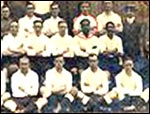 |
|
Walter in the team
|
|
Walter was apprenticed as a printer but as a good footballer played as an amateur with Clapton. In 1908 he signed for Tottenham Hotspur at inside left and as such was only the second black professional footballer. In a game at Bristol City in 1909 he was heavily abused by fans and the next season only played three games. |
| He was sold for a heavy transfer fee to Herbert Chapman’s Northampton Town in October 1911 and it was at this time that he lodged for a while in Rushden at 26, Queen Street. He flourished at Northampton and made 110 first team appearances for the club. |
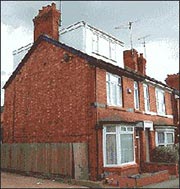 |
|
26 Queen Street
|
|
In 1914, when he was living at 33 Albany Road, Northampton he enlisted in the Army in the 17th (1st Football) Battalion of the Middlesex Regiment. He was an extremely able soldier and was promoted three times during military training, by 1916 he had been made a sergeant. He was involved in the first battle of the Somme and fought heroically even after suffering from, what is now assumed to have been, shell-shock.
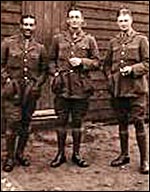 |
|
Walter in Europe
|
|
Towards the end of 1916 he was invalided home with what was called trench fever. On leaving hospital he went to the officer cadet training school at Gailes in Scotland. This action was technically impossible as the 1914 Manual of Military Law specifically precluded ‘any Negro or person of colour’ from being in command. But this was wartime and he must have been heavily recommended by his senior officers as his commission came through in May 1917. He was sent to the Italian front in 1917 as a second lieutenant in the 23rd (2nd Football) Battalion of the Middlesex Regiment, the first black combat officer. |
He was Mentioned in Dispatches by Major General Sydney Lawford for "gallantry and coolness" while leading his company of 26 men on a raiding party to cross the fast flowing River Piave. He brought his men back unharmed and was recommended for a Military Cross which he never got although it could have been awarded posthumously.
Walter spent some leave with his brother Edward in Glasgow. He was transferred to France and on 25th March 1918 he died trying to protect his men while they were under retreat from heavy German machine-gun fire during the last German offensive. Near the village of Favreuil in the Pas de Calais he was hit in the neck and was killed. Private Tom Billingham, a Leicester City goalkeeper, managed to drag Tull’s body a few yards but was forced to flee. The body was never recovered and so Walter Tull has no grave. His name is engraved in Bay 7 of the Arras Memorial which has the names of over 35,000 dead soldiers who were never found. His commanding officer broke the news of Walter’s death to his brother Edward saying how popular he was in the Battalion, brave and conscientious and that he had lost a faithful officer and a personal friend. He fought in six major battles; Ancre, November 1916 (1st Battle of the Somme); Messines, June 1917; 3rd Ypres, July-August 1917; September 1917; St. Quentin, March 1918 & Bapaume, March 1918 (2nd Somme).
|
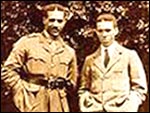 |
|
Walter & Edward
|
|
|
Casualty details from Commonwealth War Graves Commission
|
| Name |
TULL, WALTER DANIEL JOHN |
| Nationality |
United Kingdom |
| Rank |
Second Lieutenant |
| Regiment/Service |
Middlesex Regiment |
| Unit Text |
17th Bn. attd. 23rd Bn. |
| Age |
29 |
| Date of Death |
25/03/1918 |
| Additional Information |
Son of the late Daniel Tull; brother of Edward Tull-Warnock, of 419, St. Vincent St. Glasgow. Former professional footballer with Tottenham Hotspurs and Northampton Town. He played more than a hundred first team games for Northampton Town before the First World War intervened. |
| Casualty Type |
Commonwealth War Dead |
| Grave/Memorial Reference |
Bay 7 |
| Memorial |
ARRAS MEMORIAL |
On Sunday July 11th, 1999 Northampton Town F. C. Unveiled a memorial to Walter in a dedicated Garden of Remembrance at Sixfields Stadium.
His eldest brother William Stephen Palmer Tull who was a Sapper in the Royal Engineers died on 12th March 1920 aged 37. He was gassed during the war and lies in a war grave in Cheriton, Folkestone.
|
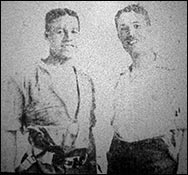 |
|
Sgt W D Tull & Sgt C H V Clark
|
The Rushden Echo, 13th August, 1915, transcribed by Gill Hollis
Two Pals in Khaki
An interesting photograph taken whilst on leave in Rushden of Sergt. W. D. Tull, of the 17th Middlesex (Footballers' Battalion), and Sergt. Gunnery Instructor C. H. V. Clark, of the R.F.A., eldest son of Mr. and Mrs. C. Clark, of "Wellingtonia," Irchester-road, Rushden.
Both are well-known in Rushden, Sergt. Tull being Northampton's right half-back.
Sergt. Clark's younger brother, Gunner Tom Clark, has been at the front for some time past with the Motor Machine Gun Section. He took part in the battle of Hill 60, and at that time an interesting account of the engagement from the pen of Gunner Clark was published exclusively in our columns.
|
Rushden Echo, 18th January 1918, transcribed by Kay Collins
A Footballer’s Commission—Walter Tull, the old “Cobbler,” is now in Italy, and is a lieutenant. On Boxing Day he took part in a raid, but the enemy had made himself scarce, and only three prisoners were found.
|
|
Rushden Argus, April 12th 1918, transcribed by Susan Manton
The Late Lieutenant Walter Tull
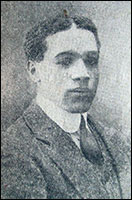 Followers of football will hear with sincere regret that Lieutenant Walter Tull, the old Northampton and Tottenham footballer, is reported killed in action during the recent fighting. Originally apprenticed to the printing trade, Tull early in life displayed great ability as a footballer and eventually joined the Tottenham Hotspur team. For a very large sum he was transferred to Northampton, with which club he played for some four or five seasons, during which he did some remarkable work for the Cobblers. It was during this period of his career that Tull also acted as cashier to Mr. J. C. Covington at the Kettering Palace, making many friends during his stay in the town. During the latter part of his civilian life he lived at Rushden, being a valued member of the Rushden Town Cricket Club. About two years ago he enlisted in the Middlesex Regiment and rose to the rank of Lieutenant by sheer merit and ability. Only a few weeks ago he was mentioned in despatches for particularly gallant work. Followers of football will hear with sincere regret that Lieutenant Walter Tull, the old Northampton and Tottenham footballer, is reported killed in action during the recent fighting. Originally apprenticed to the printing trade, Tull early in life displayed great ability as a footballer and eventually joined the Tottenham Hotspur team. For a very large sum he was transferred to Northampton, with which club he played for some four or five seasons, during which he did some remarkable work for the Cobblers. It was during this period of his career that Tull also acted as cashier to Mr. J. C. Covington at the Kettering Palace, making many friends during his stay in the town. During the latter part of his civilian life he lived at Rushden, being a valued member of the Rushden Town Cricket Club. About two years ago he enlisted in the Middlesex Regiment and rose to the rank of Lieutenant by sheer merit and ability. Only a few weeks ago he was mentioned in despatches for particularly gallant work.
|
|
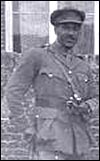





 Followers of football will hear with sincere regret that Lieutenant Walter Tull, the old
Followers of football will hear with sincere regret that Lieutenant Walter Tull, the old